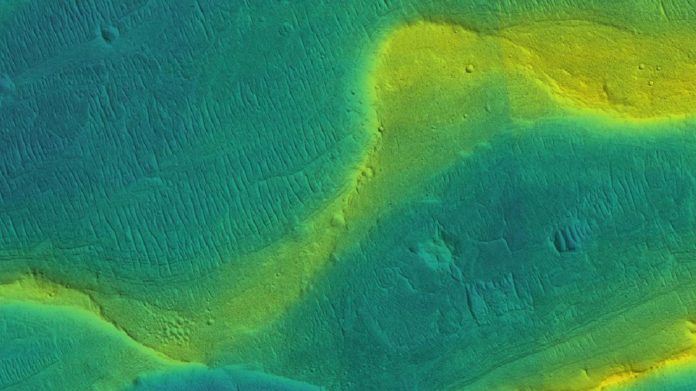According to a new study by the University of Chicago scientists, water carved deep riverbeds into the Mar’s surface, but what kind of weather is responsible for this, remains a mystery. Scientists cataloged these rivers to conclude that significant river runoff persisted on Mars later into its history than previously thought.
The study suggests that the runoff was intense—rivers on Mars were wider than those on Earth today—and formed at many areas on the red planet. But it’s a puzzle why ancient Mars had liquid water. Mars has an extremely thin atmosphere today, and early in the planet’s history, it was also only receiving a third of the sunlight of present-day Earth, which shouldn’t be enough heat to maintain liquid water.
NASA’s spacecraft have taken photos of hundreds of these rivers from orbit, and when the Mars rover Curiosity landed in 2012, it sent back images of pebbles that were rounded—tumbled for a long time in the bottom of a river.
Edwin Kite, assistant professor of geophysical sciences and an expert in both the history of Mars and climates of other worlds said, “This complicates the picture for scientists trying to model the ancient Martian climate. It’s already hard to explain rivers or lakes based on the information we have.”
“But, the constraints could be useful in winnowing the many theories researchers have proposed to explain the climate.”
Looking for a superior comprehension of Martian precipitation, scientists analyzed photographs and elevation models for more than 200 ancient Martian riverbeds spanning over a billion years. These riverbeds are a rich source of clues of information about the water going through them and the atmosphere that delivered it. For instance, the width and steepness of the riverbeds and the size of the gravel tell scientists about the force of the water stream, and the amount of the gravel constrains the volume of water coming through.
Their analysis shows clear evidence for persistent, strong runoff that occurred well into the last stage of the wet climate.

Kite said, “The results provide guidance for those trying to reconstruct the Martian climate. For example, the size of the rivers implies the water was flowing continuously, not just at high noon, so climate modelers need to account for a strong greenhouse effect to keep the planet warm enough for average daytime temperatures above the freezing point of water.”
“The rivers also show strong flow up to the last geological minute before the wet climate dries up. You would expect them to wane gradually over time, but that’s not what we see. The rivers get shorter—hundreds of kilometers rather than thousands—but discharge is still strong. The wettest day of the year is still very wet.”
“It’s possible the climate had a sort of on/off switch, which tipped back and forth between dry and wet cycles.”
“Our work answers some existing questions but raises a new one. Which is wrong: the climate models, the atmosphere evolution models, or our basic understanding of inner solar system chronology?”
The study is published March 27 in Science Advances.
